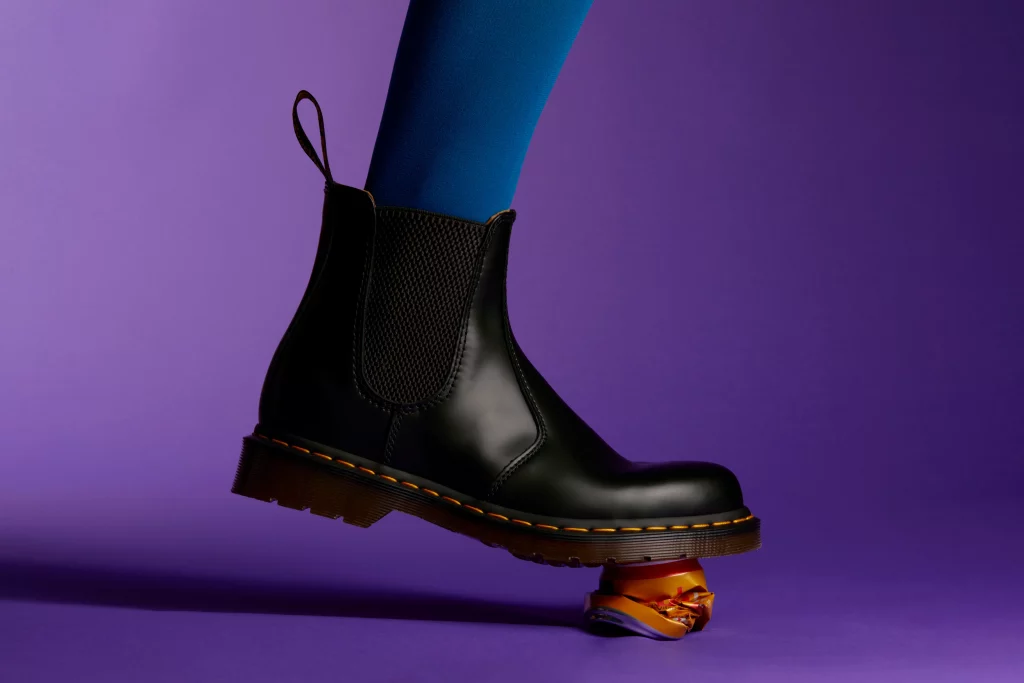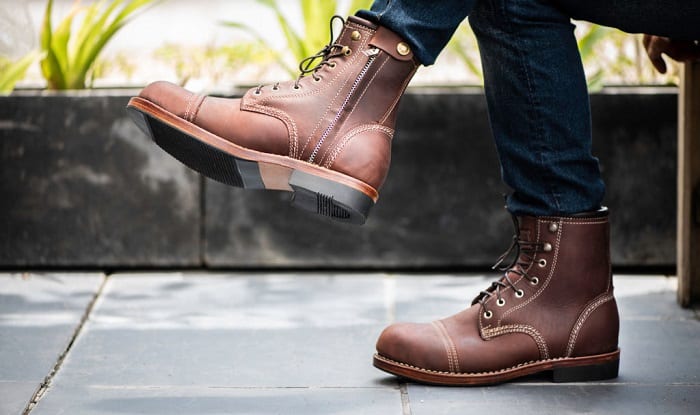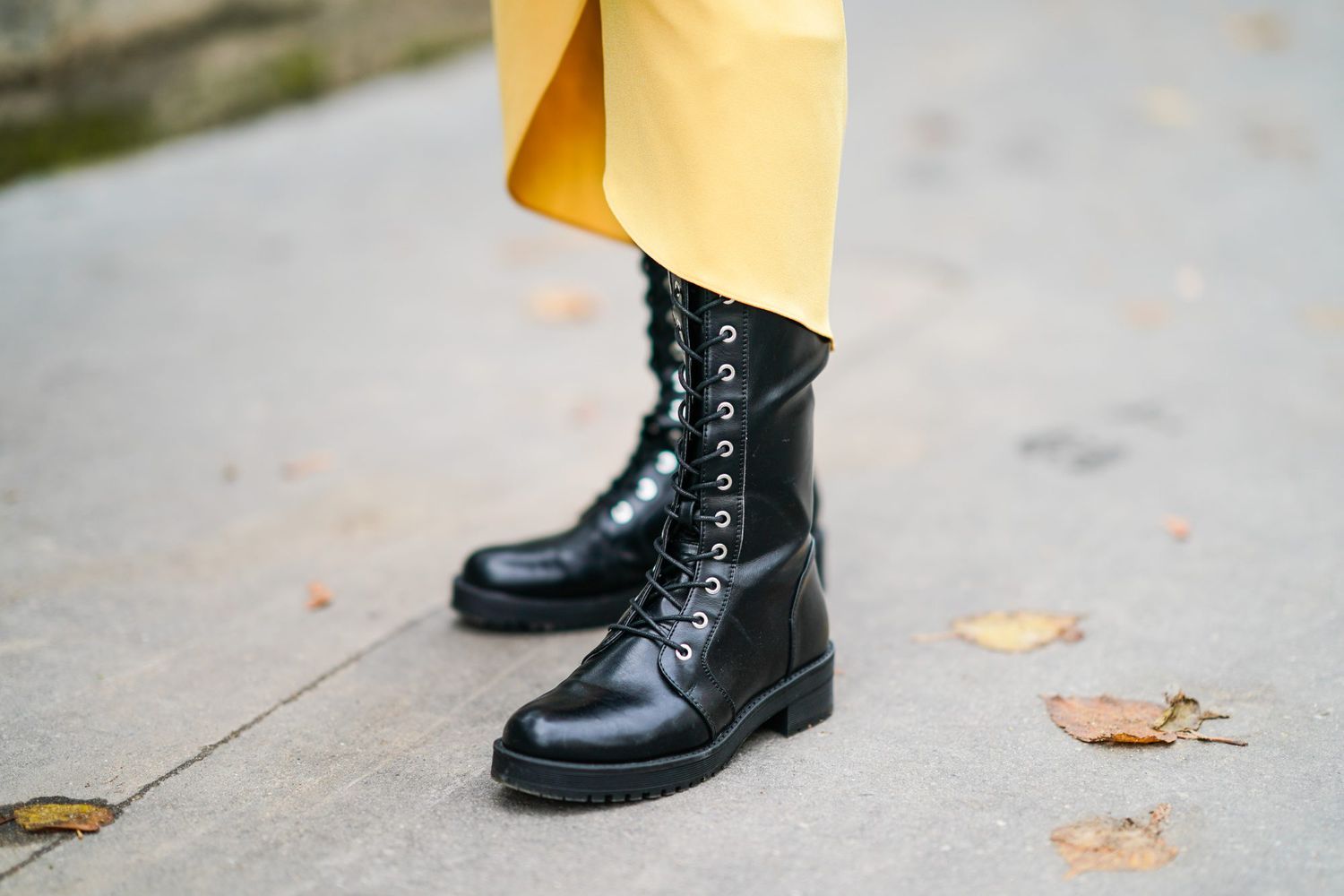Putting on boots without a zipper can be a bit tricky, especially if they’re tall or have a snug fit. Here’s a quick guide to help you put on boots without a zipper:
- Wear appropriate socks.
- Loosen laces for wider opening.
- Use a boot horn or your hand to ease your foot in.
- Wiggle your foot to settle inside.
- Stand up and adjust foot position.
- Lace up the boots gradually.
- Walk to ensure comfort and fit.
How Can You Prepare For Putting on Boots?
Mastering the art of donning boots begins with a few simple yet crucial steps that ensure both comfort and functionality.
Choose Appropriate Socks:
The choice of socks can greatly impact your comfort and the fit of the boots. In addition, consider the following factors when selecting socks:
Material: Opt for moisture-wicking materials like merino wool or synthetic blends. These materials help keep your feet dry by drawing moisture away from your skin.
Thickness: Then, choose socks that are neither too thick nor too thin. Very thick socks can make the boots feel tight, while thin socks may lead to discomfort or blisters.
Seam Placement: Next, look for socks with flat or minimal seams to prevent friction and irritation against your skin.
Sock Length: Moreover, choose a sock length that matches the height of your boots. If your boots are higher, you might prefer taller socks to prevent chafing.
Ensure Boots are Clean and Dry:
Proper boot maintenance ensures not only your comfort but also the longevity of your footwear. However, before putting on your boots, make sure they are clean and dry:
Cleaning: First, remove dirt, debris, and mud from the exterior of the boots. Additionally, use a soft brush or a damp cloth to gently wipe away any grime.
Drying: If your boots are wet from previous use or cleaning, allow them to air dry naturally. Moreover, avoid using direct heat sources like heaters or radiators, as excessive heat can damage the materials and cause them to lose their shape.
Deodorizing: To prevent unpleasant odors, consider using odor-absorbing inserts or sprinkling baking soda inside your boots when they are not in use.
Loosen Laces or Straps:
Loosening the laces or straps before putting on your boots not only makes the process smoother but also prevents unnecessary strain on the boot materials and your feet:
Loosen Fully: First, ensure that the laces or straps are completely loosened all the way to the bottom eyelets/hooks of the boot.
Avoid Overstretching: Then, tugging too hard on tightly laced boots can damage the eyelets or strain the laces, affecting the overall fit and support of the boot.
Easy Entry: Loosening the laces provides a wider opening, making it easier to slide your foot into the boot without forcing or causing discomfort.
Preserve Shape: Moreover, avoid wearing boots without loosening the laces, as this can lead to unnecessary stress on the boot’s structure and may eventually affect its shape and fit.
How Can You Prepare For Putting on Boots without a Zipper?

Lacing up boots sans zippers demands a methodical approach, requiring attention to a few key prepping rituals that ensure a snug and secure fit.
Sit Down on a Stable Surface:
Finding a stable place to sit before putting on your boots offers several benefits:
- Balanced Posture: Sitting down ensures a stable posture, reducing the risk of imbalance and potential falls.
- Controlled Entry: When you sit, you can better control the entry of your foot into the boot, minimizing the chance of forcing your foot and causing discomfort.
- Less Strain: Sitting down prevents unnecessary bending and stretching that could strain your back or leg muscles.
Insert Foot into the Boot:
Inserting your foot properly sets the foundation for a comfortable fit:
- Hold the Tongue: Firstly, use one hand to hold the tongue of the boot. Moreover, ensure that the tongue stays in place as you insert your foot, preventing misalignment or folds that might cause discomfort later.
- Gently Slide Foot: In addition, as you gently slide your foot into the boot, ensure that your toes are correctly aligned and not pushing against the front of the boot. Pushing too hard can deform the boot’s shape and potentially damage your toes.
Position the Heel:
Properly positioning the heel within the boot is crucial for a secure and comfortable fit:
- Heel Seating: Ensure that your heel is placed at the back of the boot, snug against the heel counter. This ensures proper support and prevents unnecessary friction during movement.
- Adjust if Necessary: However, if your heel isn’t comfortably seated or aligned, use your hand to adjust its position. A well-seated heel prevents discomfort and improves stability.
Pull Up the Boot:
Pulling up the boot correctly ensures that it is properly fitted around your leg:
- Hold the Back: With one hand, hold the back of the boot, typically around the ankle area. This gives you a grip to assist with the pulling-up motion.
- Pull Your Leg Up: In addition, use your other hand to gently pull your leg up while holding onto the back of the boot.
This gradual motion helps prevent abrupt tugging that could strain the boot material.
Adjust the Tongue and Collar:
Proper adjustment of the tongue and collar contributes to comfort and prevents irritation:
Even Distribution: Ensure that the tongue and collar are evenly distributed on both sides of your leg. This prevents discomfort caused by uneven pressure.
Smooth Out Folds: Smooth out any folds or creases in the tongue and collar to prevent pressure points that can lead to discomfort or chafing.
Start Lacing or Strapping:
Proper lacing or strapping provides a secure fit and prevents the boot from slipping:
Begin at Lower Eyelets/Hooks: Firstly, start lacing from the lower eyelets/hooks. Moreover, this gives you a solid base for gradually tightening the boot around your foot and leg.
Gradually Work Up: As you lace or strap, gradually move upwards. Hence, this allows for an even distribution of tension, preventing overly tight or loose areas.
Tighten the Laces or Straps:
Achieving the right tension in laces or straps is essential for a comfortable and supportive fit:
Use Comfortable Tension: Pull the laces or straps with a firm but comfortable tension. Avoid excessive tightness, as this can cause discomfort and restrict blood circulation.
Ensure Snugness: Focus on achieving snugness around the foot and ankle area. This provides the necessary support and prevents excess movement within the boot.
What are some effective tips for boot application?

Stepping into the world of boot application opens the door to a range of effective tips that promise not only ease in wearing but also longevity in your favorite pair.
Use a Boot Horn or Plastic Bag:
- Boot Horn: A boot horn is a tool designed to help you slide your foot smoothly into your boots. Additionally, place the curved end of the boot horn at the heel of your foot and use it as a lever to guide your foot into the boot.
- Plastic Bag: Alternatively, you can use a plastic bag by placing it over your foot before inserting it into the boot. The plastic reduces friction and allows your foot to slide in more easily.
Use a Proper Technique for Lacing:
Heel Lock Technique: The heel lock technique involves creating an extra loop in the lacing around the ankle area.
In addition, this loop helps secure the heel in place and prevents excessive movement within the boot, enhancing comfort and support.
Invest in Boot Hooks or Pull Tabs:
- Boot Hooks: Boot hooks are small, curved tools that can be attached to the loops or eyelets of your boots.
Moreover, they provide a better grip for pulling the boots up, especially if the shaft is tall.
- Pull Tabs: Some boots come with built-in pull tabs on the back, making it easier to pull them up.
However, If your boots don’t have pull tabs, you can consider adding aftermarket pull tabs for convenience.
Don’t Rush the Process:
Importance of Patience: Taking your time while putting on your boots ensures that you don’t damage the boot material or strain your muscles. Rushing can lead to uneven lacing, discomfort, or even injury.
FAQs
How do you put on difficult boots?
Putting on difficult boots may require using a boot horn or plastic bag to aid sliding, adjusting your foot’s position carefully, and ensuring gradual lacing for a secure fit.
Why can’t I get boots on?
Difficulty getting boots on might result from incorrect heel placement, tight lacing, or misaligned tongue. Ensure proper technique and take your time.
How do you put on tight boots?
To put on tight boots, try using a boot horn or plastic bag for easy entry, loosen laces or straps, and consider a heel lock lacing technique for a snug yet comfortable fit.
Can you get a zipper put in boots?
Yes, it’s possible to have zippers added to boots by a professional cobbler or shoemaker, which can make putting on and removing boots easier.
Do boots get easier to put on?
Yes, boots can become easier to put on as you become more familiar with the process and the materials soften slightly over time with regular wear.
How do you wear painful boots?
Wearing painful boots can be eased by using gel inserts, moleskin padding, or properly cushioned socks to alleviate pressure points and increase comfort.
Conclusion
In conclusion, mastering the art of putting on boots without a zipper is a valuable skill that enhances both your comfort and the longevity of your footwear.
By following the step-by-step guide and incorporating the provided tips, you can ensure a smoother and more enjoyable experience every time you put on your boots.
Moreover, taking the time to choose appropriate socks, ensuring clean and dry boots, and loosening laces or straps are foundational steps that set the stage for a successful application process.
Additionally, the detailed step-by-step guide emphasizes the importance of a stable sitting position, proper foot insertion, correct heel positioning, and careful boot adjustment.
Moreover, implementing techniques such as using a boot horn, employing proper lacing techniques, and investing in convenient attachments like boot hooks or pull tabs can significantly simplify the process.











